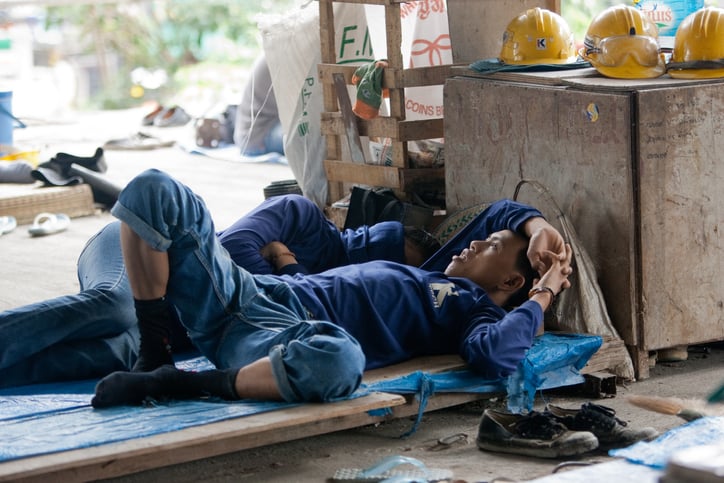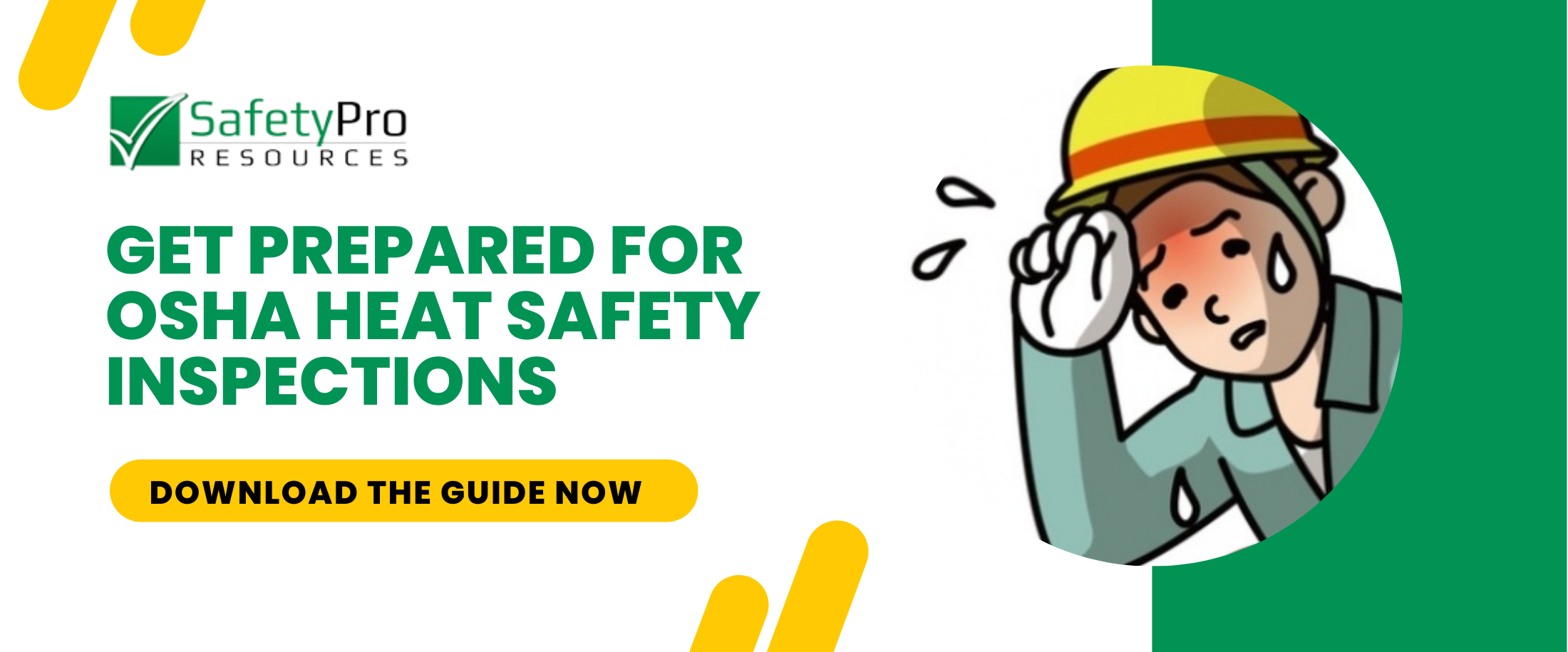
As summer approaches, you are likely assessing the changes it will bring to your site. Everything from scheduling to materials is affected by rising temperatures—most importantly, the health and safety of your employees can be jeopardized by an inadequate heat safety plan. Here are some signs to look for that could indicate summer heat is impacting your workers.
Risks of Heat Stress
Employees who are not acclimatized to working in higher temperatures may not realize the signs of heat-related illness until they are severely impacted. The most severe warning signs are dizziness, elevated body temperature, and dry skin. These are the first stages of heat exhaustion and heat stroke. Affected workers are also likely to present with fatigue and thirst, which should not be ignored.
More specifically, workers doing heavy manual labor in high heat are at greater risk of suffering from heat cramps in their arms, legs, or trunk. Cramps are a symptom of dehydration and overheating, which can lead to heat syncope—dizziness, loss of consciousness, and/or mental confusion. If this occurs, the worker should be given immediate treatment, fluids, and rest.
Another symptom of heat illness is heat rash, which can resemble an allergic reaction. Heat rash usually appears on the neck, upper chest, or skin folds (elbows, knees, armpits) as the body overheats and is unable to maintain a healthy temperature by sweating.
How to Protect Workers from Heat
You should have a treatment and mitigation plan to keep your workers safe no matter which symptoms appear.
Limit Exposure
Predictable procedures, such as routine equipment checks, should be scheduled for cooler seasons. If possible, avoid scheduling the most intensive outdoor work during the heat of the day. Consider using relief workers or a rotating schedule to make sure that employees have time to recover from heat-intensive work.
Heat Stress PPE
Because some exposure to high temperatures is inevitable, consider using PPE to stay protected during the summer heat. Dermal patches can be worn to monitor core body temperatures and better identify when workers should be removed from the work area to cool down.
For workers performing prolonged and strenuous tasks, a heart rate monitor can track overexertion and initial signs of heat exhaustion. Guidelines encourage limiting a sustained heart rate to 180 bpm minus the worker’s age and aiming for a recovery rate of 120 bpm after peak exertion. Simpler measures, such as sunscreen, long sleeves, hats, and shade are also effective.
Enhance Heat Tolerance
As workers grow accustomed to working in high temperatures, they should be given a lighter workload (20% of typical) that is gradually increased over a period of one to two weeks. For workers with experience in high heat who are returning from an absence of more than four days, acclimatization should start at 50% of a normal workload and gradually ramp up over three consecutive days.
Encourage Hydration
It may seem obvious, but this is the key to preventing cramping and dehydration. When combined with a short rest in a shaded area, hydration is one of the most effective ways to relieve and prevent heat illness. Workers should know where the nearest water station and restroom are. Consider offering not just water, but a sports drink with electrolytes. Additionally, some common medications such as amphetamines, antihistamines, and diuretics can dramatically increase a person’s hydration needs.
Create a Heat Alert Program
The National Weather Service (NWS) currently categorizes heat alerts into four different levels:
|
Caution |
80-90 degrees |
|
Extreme Caution |
91-103 degrees |
|
Danger |
103-124 degrees |
|
Extreme Danger |
126 degrees or higher |
A heat alert program can track this information and give visual alerts (such as a flashing LED) that keep employees abreast of weather changes. In addition to temperature, some heat alert programs can use algorithms that incorporate wet bulb/dry bulb readings and humidity. These alerts can keep your crew responsive and safe throughout the day, especially when combined with relevant training.
Related Content: Preventing Worker Heat Stress Illness and Injuries
Get Compliant with Heat Safety
Whether your worksite needs to be overhauled for summer or your team simply needs a refresher, it is your responsibility to ensure that your work site is safe and compliant with heat mitigation protocols. A safety specialist can audit your existing practices and recommend remedial training and equipment to fill any blind spots in your approach.


















